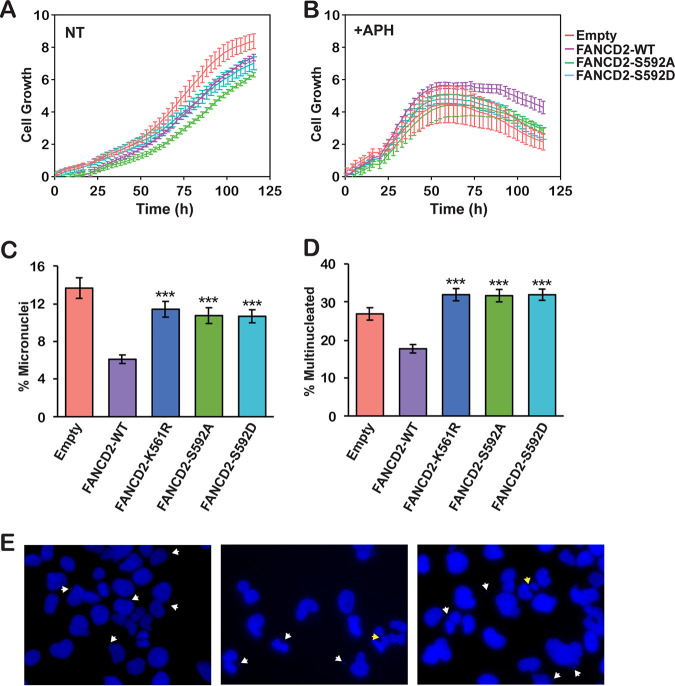FIG 5.
Mutation of FANCD2 S592 leads to decreased proliferation under conditions of replicative stress and increased mitotic defects. (A and B) FA-D2 cells stably expressing empty vector or V5-tagged FANCD2-WT, FANCD2-S592A, or FANCD2-S592D were incubated in the absence (NT) (A) or presence of 0.4 μM aphidicolin (+APH) (B). Cellular proliferation was monitored by measuring electrical impedance every 15 min over a 120-h period using the xCELLigence real-time cell analysis system. Error bars represent the standard deviations of quadruplicate measurements, and this experiment was repeated three times with similar results. P < 0.05 between cells expressing wild-type FANCD2 and those expressing empty vector or the S592 variants for all time points between 90 and 120 h. (C and D) FA-D2 cells stably expressing empty vector or V5-tagged FANCD2-WT, FANCD2-K561R, FANCD2-S592A, or FANCD2-S592D were incubated in the absence of any DNA-damaging agents and mitotic aberrations, including micronuclei (C) and multinucleated (>2) cells (D), were scored. At least 400 cells per group were scored, and the combined results from two independent experiments are shown. ***, P < 0.001. (E) Representative images of micronuclei, nucleoplasmic bridges, and multinucleated cells, indicated by white arrows, from FA-D2 cells expressing FANCD2-S592A or FANCD2-S592D.

